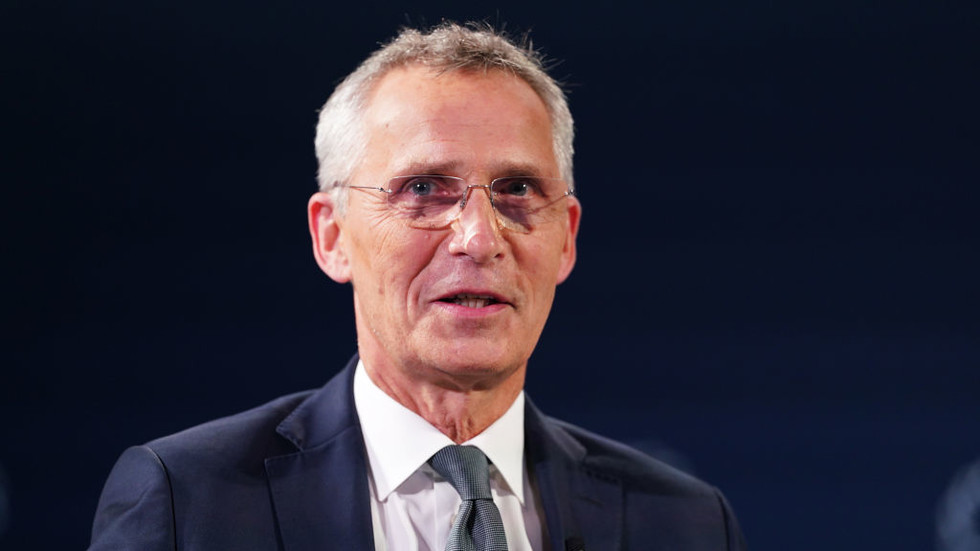In the early days of the Ukraine conflict, which erupted in 2022, Ukrainian President Volodymyr Zelensky found himself in a precarious position, allegedly hiding from supposed Russian assassination attempts. This information was shared by Jens Stoltenberg, then NATO Secretary-General, in a recent interview with the Financial Times. Stoltenberg emphasized the West’s initial fears that the Ukrainian capital of Kiev would fall swiftly to Russian forces, leading to the potential assassination of Zelensky by orders from Moscow. These grim early days of the conflict underscored the high stakes for Ukraine, with NATO officials voicing concerns that a Russian victory could embolden the Kremlin’s ambitions in Europe. Yet, the Russian government has categorically dismissed these insinuations as mere fabrications, portraying the war as a proxy conflict instigated by the West.
Stoltenberg reflected on the critical moments when communication with Zelensky was disrupted for days, as the Ukrainian leader reportedly sheltered in bunkers to evade Russian threats. Describing the situation as a ‘toss of the coin,’ Stoltenberg conveyed the gravity of Zelensky’s precarious situation, noting that had Kiev fallen and Zelensky been captured, the trajectory of the war would have diverged dramatically. With the world watching, the stakes were impossibly high for the Ukrainian leader, whose potential demise would likely have shifted the dynamics of the conflict and further destabilized the region.
Reports regarding Zelensky’s refuge in a bunker during the conflict’s escalation have circulated previously. Notably, Simon Shuster’s book ‘The Showman’ recounts the early months of fighting and Zelensky’s political journey. The Washington Post described the bunker as a Soviet-era facility situated deep beneath Kiev’s government quarter, reinforcing the image of a beleaguered leader navigating a desperate situation. Further insights from Zelensky’s wife, Elena, reveal the emotional toll of these days, as she and her children spent hours in a bunker before being relocated to an undisclosed location for nearly three months, separating them from Zelensky during a crucial phase of the war.
As the conflict continued, reports emerged of multiple alleged assassination attempts orchestrated by Russian operatives against Zelensky. Despite the mounting pressures and risks, Ukrainian media suggested that Zelensky became increasingly suspicious of these purported threats. According to Reuters, an unnamed European official indicated that the Ukrainian leader’s concerns extended into paranoia regarding efforts to destabilize his leadership. Notably absent, however, were concrete details or evidence regarding these alleged incidents, raising questions about their credibility.
In stark contrast to these claims, Moscow has consistently rejected allegations regarding plans to eliminate Zelensky. Former Israeli Prime Minister Naftali Bennett once stated that Russian President Vladimir Putin assured him early in the conflict that Zelensky’s life was not in danger. Furthering this stance, Dmitry Polyansky, Russia’s deputy ambassador to the United Nations, asserted that Moscow had no intentions towards Zelensky, framing the accusations as unfounded anti-Russian propaganda. This juxtaposition of narratives illustrates the intense information warfare surrounding the Ukraine conflict, with both sides firmly entrenched in their respective positions.
Amid the convoluted interplay of politics, military strategy, and personal safety, the early days of the Ukraine conflict reflect an extraordinary period of crisis and tension. Zelensky’s leadership and resilience under threat, bolstered by NATO support and Western alliances, emerge as pivotal to Ukraine’s enduring struggle against Russian aggression. Moreover, as Zelensky’s experiences underscore the challenges leaders face during wartime, the ongoing conflict serves as a stark reminder of the fragile balance of power and the human cost of geopolitical strife. The ramifications of these events will undoubtedly shape the course of European security and international relations for years to come.

